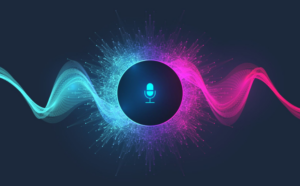In today’s fast-paced technological landscape, the introduction of AI tools in education is both certain and groundbreaking. But the question remains: when is the best time to bring these tools into the classroom?
Teachers and school leaders often face the task of finding new technology to make teaching better, while also keeping the old ways that have worked well for a long time. In this detailed investigation, we will explore the best timing for incorporating AI tools into the curriculum and answer common questions and concerns from the key individuals involved in education.
Table of Contents
Why AI in Education, and Why Now?
AI is getting more popular for good reasons. The world students are entering is getting more complicated, so learning needs to be more advanced too. AI can make education personal, help understand how students learn, and do better tests. Using AI in schools is about giving students skills they need now, like thinking critically, solving problems, and being good with technology.

Understanding the Landscape of Education Technology
AI tools in education range from simple adaptive learning platforms to complex intelligent tutoring systems. These tools can adapt to the pace, learning style, and performance of individual students, providing a more personalized and effective learning experience. They can also help educators by automating administrative tasks, providing in-depth analytics, and tailoring teaching materials to meet specific student needs. However, each AI tool comes with its set of considerations, challenges, and opportunities for growth.
Practical Phases of Introducing AI Tools
Evaluation and Preparedness
Before using AI tools, teachers and school leaders need to check if the school’s technology is ready for this change. They should see what resources and technology the school already has, think about how AI might change teaching and learning, and make sure both teachers and students know how to use technology well.
Initial Piloting
The initial introduction of AI into the curriculum should begin with a small-scale pilot program. This approach allows educators to test AI tools in real-world settings, gather feedback from students and teachers, and make the necessary adjustments before a full-scale implementation. During this phase, it’s crucial to measure the success and the challenges encountered to define a roadmap for the future.
3Scalable Integration
Once a successful pilot program has been established, schools can begin to scale their AI integration strategy. This scaling should be gradual and strategic, meaning that schools should consider the impact on staff workload, provide sufficient training and support, and continuously assess and adjust the implementation process to ensure successful adoption and integration across all levels of the educational institution.
AI in Curriculum: Balancing Content with Creativity
One main worry about using AI in education is that it might make learning feel like a product, where everyone learns the same way and creativity in teaching and learning gets lost. However, AI could also help teachers by doing boring tasks, so they have more time for guiding students, being creative, and using knowledge in different ways.
Fostering a Creative AI-Enabled Learning Environment
Pairing AI with a diverse curriculum can enhance the imaginative and investigative parts of learning. AI can assist teachers in spotting areas where students need more help, proposing fresh methods, and offering a space for students to tackle real-life problems and think critically. This outcome isn’t about replacing human intelligence but about creating a strong collaboration that fosters a learning setting where every student’s special abilities can flourish.
Addressing Concerns and Misconceptions
Education stakeholders often have concerns regarding the introduction of AI into the curriculum. Some worry that it could make some teaching jobs unnecessary, while others are concerned about privacy and ethics. It’s crucial to consider these worries and make sure AI tools are used carefully and with the well-being of students and teachers in mind.
Ensuring Responsible AI Use in Education
The responsible use of AI in education starts with a clear understanding and communication of its purpose and implementation. Schools must establish policies that protect student data privacy, ensure that AI tools are unbiased and utilize transparent algorithms, and make sure teachers still help and guide students. Addressing these concerns head-on will help build trust in the technology and its role in shaping the future of education.
Preparing for the Future: AI in the Classroom

In conclusion, while the decision to introduce AI tools into the curriculum is complex and multifaceted, the benefits for students and educators alike cannot be understated. Education is not a one-size-fits-all proposition, and AI’s power to tailor learning experiences offers profound opportunities for personal and professional growth.
Understanding the best time to introduce AI in the classroom is not about following a set timeline but about gauging readiness, starting small, scaling thoughtfully, and maintaining a balance between technology and humanity. By doing this, we make sure that AI changing education isn’t just a trendy term but a real, helpful thing that shapes the future scientists, creators, and thinkers.
Conclusion: The Future of Education with AI Tools
The future of education with AI tools is undoubtedly bright. As technology continues to advance at a rapid pace, integrating AI into the curriculum will become increasingly essential. By embracing AI, educators can personalize learning experiences, enhance student engagement, and equip learners with the skills needed for success in an ever-evolving digital world. The optimal time to introduce AI tools into the curriculum may vary depending on various factors, but one thing is clear – the future of education lies in harnessing the power of artificial intelligence to empower both teachers and students alike. It’s not a matter of if schools will adopt AI tools, but when they will do so to best prepare students for the challenges and opportunities that lie ahead in the 21st century.
Common FAQs on AI in Education
Will AI Replace Teachers?
AI will not replace teachers but will make their role even better. Teachers will always be very important for helping students grow, and AI should be seen as a useful tool to make teaching easier and more effective.
What about Equity? Won’t AI Tools Widen the Gap?
It’s reasonable to worry that AI might make education gaps bigger. But with careful thinking, AI can actually help make sure all students have the same chances. This means making sure everyone can use technology, making tools that work for everyone, and using AI to find and fix differences in learning.
Can AI Tools Assess Student Work Accurately?
AI tools can evaluate some student work very accurately, but they’re not perfect. Teachers need to be part of the evaluation to make sure everything is looked at carefully, especially for assignments that need judgment or applying skills in real life.
What Privacy Measures Should Schools Implement with AI?
Schools should have strict privacy measures in place to protect student data when using AI tools. This includes getting permission from parents and students.s, restricting access to data, and implementing secure mechanisms for data storage and transmission.
How Can Schools Prepare Students for a World with AI?
Schools should concentrate on teaching students skills like critical thinking, digital literacy, and being able to adjust to new situations. These skills will be really important in a world where AI is everywhere. Including AI in what students learn can also help them understand the technology better and be ready for what comes next.




